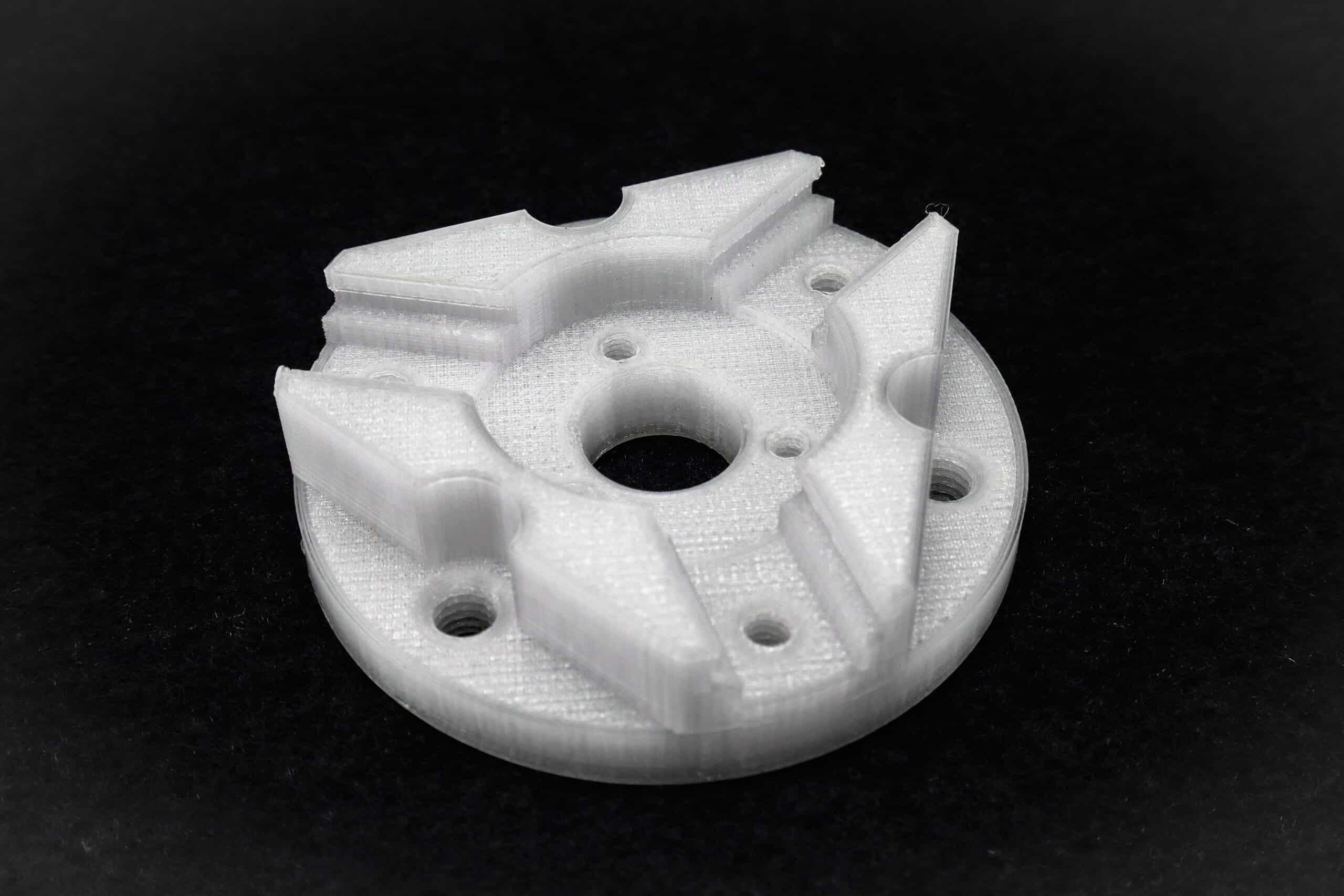5 Engineering Grade Plastics To Replace PLA
UNDERSTANDING PLA’S LIMITATIONS
If you have never used a 3D printer, or only have only used an inexpensive consumer 3D printer, you may think that PLA is the most common and possibly best 3D printing plastic to use.
PLA is a common and popular 3D printing plastic derived from renewable resources.
However, while PLA is strong and rigid, it has few benefits other than aesthetics.
PLA is quite brittle, susceptible to humidity (hydrophobic) and can shatter easily. Also, its glass transition temperature, or the temperature at which it softens, is quite low and will distort or melt in a car on a hot day.
PLA’s popularity mostly stems from the fact that PLA is very inexpensive and does not require any additional heat to ensure good layer adhesion.
With the growing number of inexpensive, consumer 3D printers, which are not enclosed, PLA is the go-to material of choice for these customers.
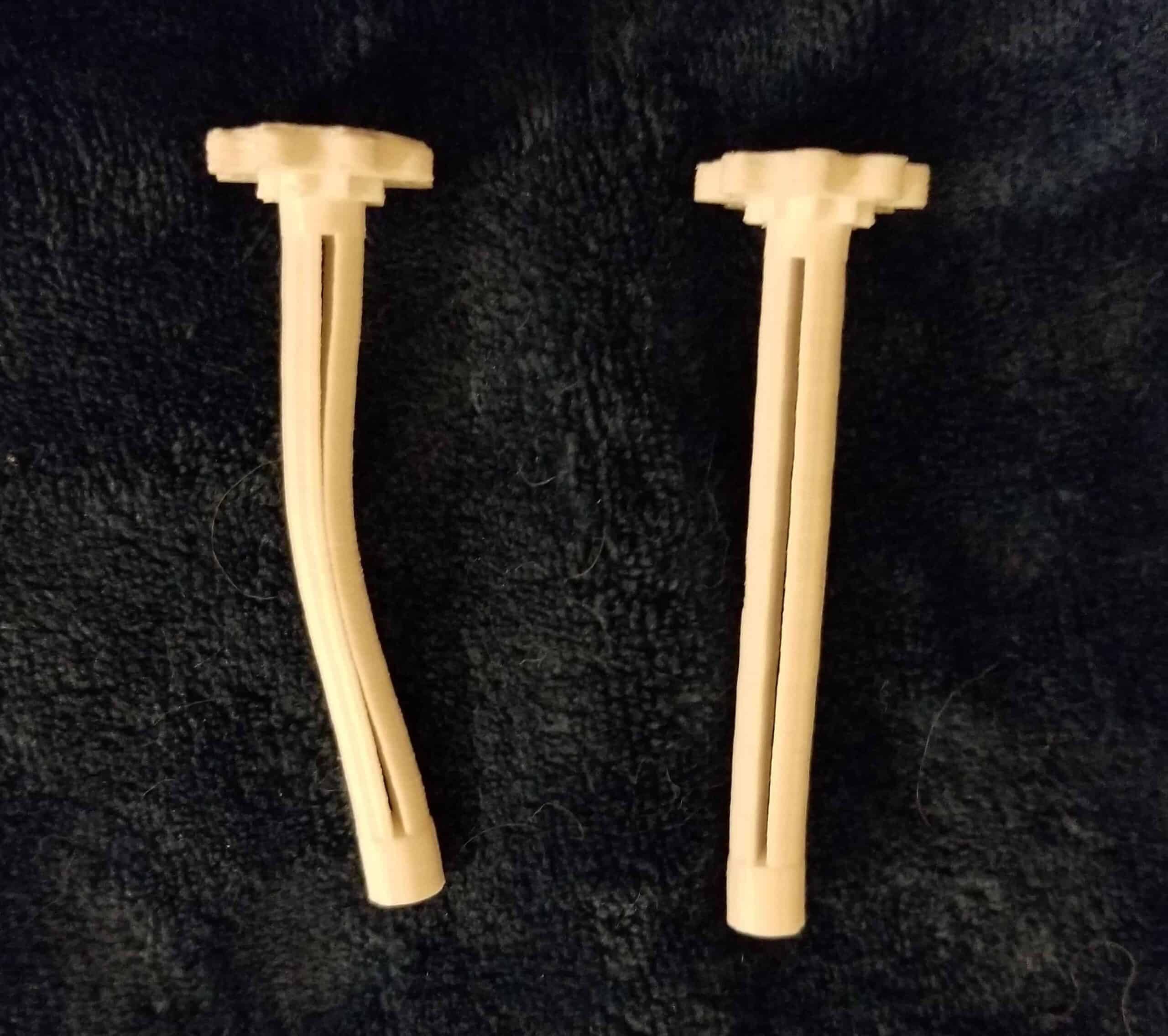
Two identical PLA parts with maximum infill. One shows the heat distortion from being left in a car on a hot summer’s day. (Source: Reddit)
WHY CONSIDER OTHER MATERIALS BESIDES PLA?
Now that you own (or are considering purchasing) a Fusion3 3D printer, you have the ability to print large parts quickly using higher strength, higher temperature materials with features not found on most 3D printers.
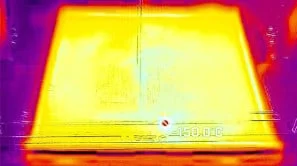
MULTI-ZONE HEATED PRINT BED
The Fusion3 EDGE 3D printer’s large 14″x14″x14.5″, multi-zone heated bed heats up to 145*C and ensures proper bed adhesion for all 3D printing materials.
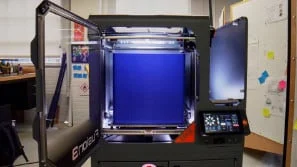
LARGE ENCLOSED 3D PRINT AREA
Every Fusion3 3D Printer has an enclosed print area and multi-zone heated bed provide a stable 45*C to 70*C environment, ensuring excellent print results for high-temperature, engineering-grade materials including Polycarbonate, ABS and Nylon.
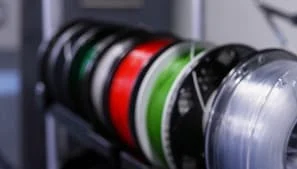
OPTIMIZED PRINT SETTINGS
Fusion3’s testing & certification process ensures our customers can successfully print the widest variety of materials for 3D printing ‘out of the box’. We publish optimized settings within our REACTOR 3D printing software.
DON’T BELIEVE THE HYPE AROUND ‘SOLUBLE SUPPORT’
Our 3D printers do not require the use of messy, difficult to use, soluble support material, requiring time and effort to wash off.
Soluble support materials are certainly valuable if your part requires ‘perfect’ surface quality or has internal chambers. However, soluble materials on the ‘open’ market are very experimental, do not work well with higher temperature materials like ABS/ASA, Nylons, and Polycarbonate, susceptible to the humidity in the air. In short, they are not reliable enough for commercial use and do not warrant the performance impact to add a second print head.
Fusion3 3D printers utilize “Breakway Supports”. If you’ve only used PLA, you may think poorly of this method as PLA is brittle making these support structures difficult to break off.
Breakaway supports with the materials listed below come off easily, leaving surprisingly clean surfaces.
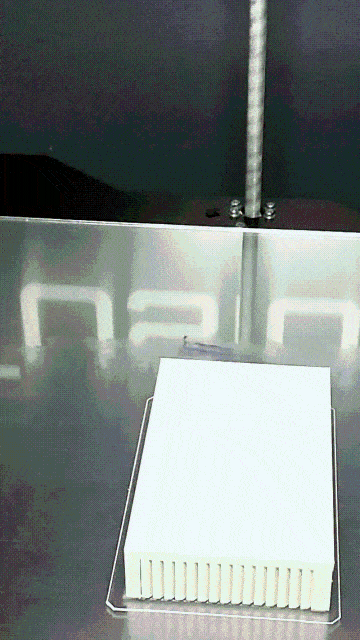
A 3D printed part in ABS, showing real-time removal of breakaway supports (less than 10 seconds) and a very clean finish underneath.
FIVE (5) ALTERNATIVES TO PLA THAT YOU SHOULD CONSIDER
3D PRINTING ON YOUR FUSION3 3D PRINTER
Let’s open your eyes to 5 engineering-grade materials that print better and have greater utility than PLA with your Fusion3 F410 3D printer
ABS
ABS is a strong, engineering-grade thermoplastic that provides great resistance to abrasion, heat and impact. ABS provides some chemical resistance and is somewhat rigid. When 3D printed provides dimensional stability and has hard surface.
Cost: ABS is inexpensive (approx.$20-$30 per kilogram from quality suppliers).
Uses: ABS is well suited for a variety of 3D printed parts that require strength and durability, with rigidity, at a low cost. This could be anything from hardware brackets, to assembly fixtures to charging docks to radio housings.

Oil Filter Wrench Funnel 3d printed on the Fusion3 F410 in ABS
ASA
ASA is chemically similar to ABS but engineered for outdoor use. Like ABS, it too provides great resistance to abrasion, heat and impact. ASA has excellent dimensional stability and hardness. ASA, however, provides superior resistance to UV exposure and is somewhat chemical resistant.
Cost: ASA is more expensive than ABS (approx.$35-$45 per kilogram from quality suppliers).
Uses: You’ll look to use ASA instead of ABS for high-strength durable outdoor plastic items. Anything from outdoor furniture, mounting brackets, protective housings, and decorative items.
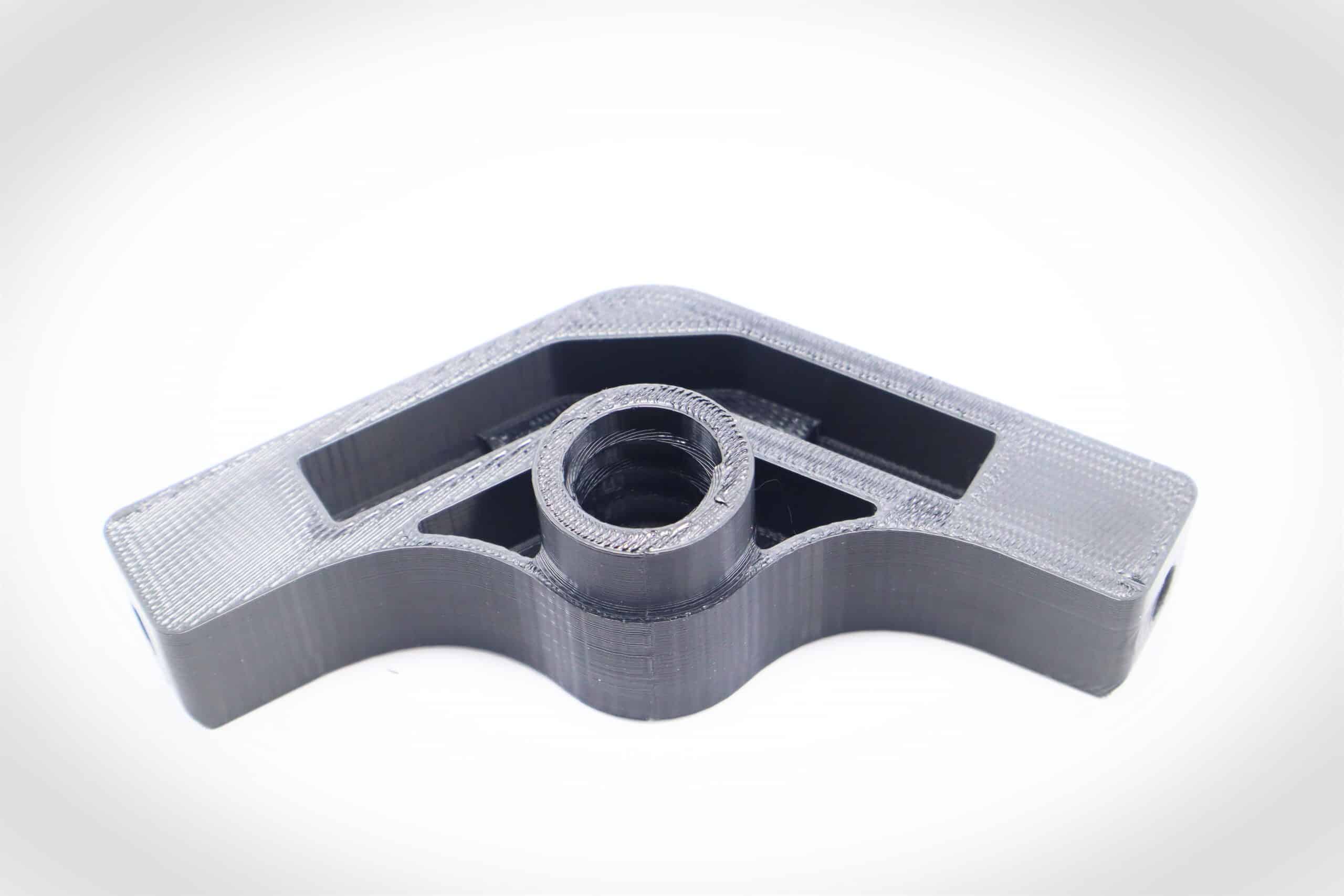
Outdoor antenna mount printed in ASA, taking advantage of the material’s weather and UV resistance
NYLON
Nylon, is the common name for a group of plastics called, and come in different variations, of which the most common are Nylon 12, Nylon 6 and Nylon 6-6. Nylon is a very durable material that exhibits a great strength to flexibility ratio and demonstrates excellent impact resistance. You will find that different formulations of Nylon will have excellent wear resistance, resistance to chemicals or UV radiation, and even rated as safe for food handling or medical use.
Cost: Nylons are more expensive than other materials and can range from $45 per KG for generic Nylons to over $90 per KG for unique branded formulations.
Uses: Nylon is best suited for 3D printed items that can handle friction such as gears, belts and handles. Also, items that will not scratch other items, such as assembly fixtures or Prosthetics, are well suited for Nylon. The flexibility offered by Nylon make it well suited for cases, enclosures, and robotic, mechanical and other functional parts.
Special Handling: Nylon, due to its hygroscopic nature, requires special handling with FDM/FFF 3D printing to ensure that it does not absorb humidity during and after 3D printing prior to re-use.
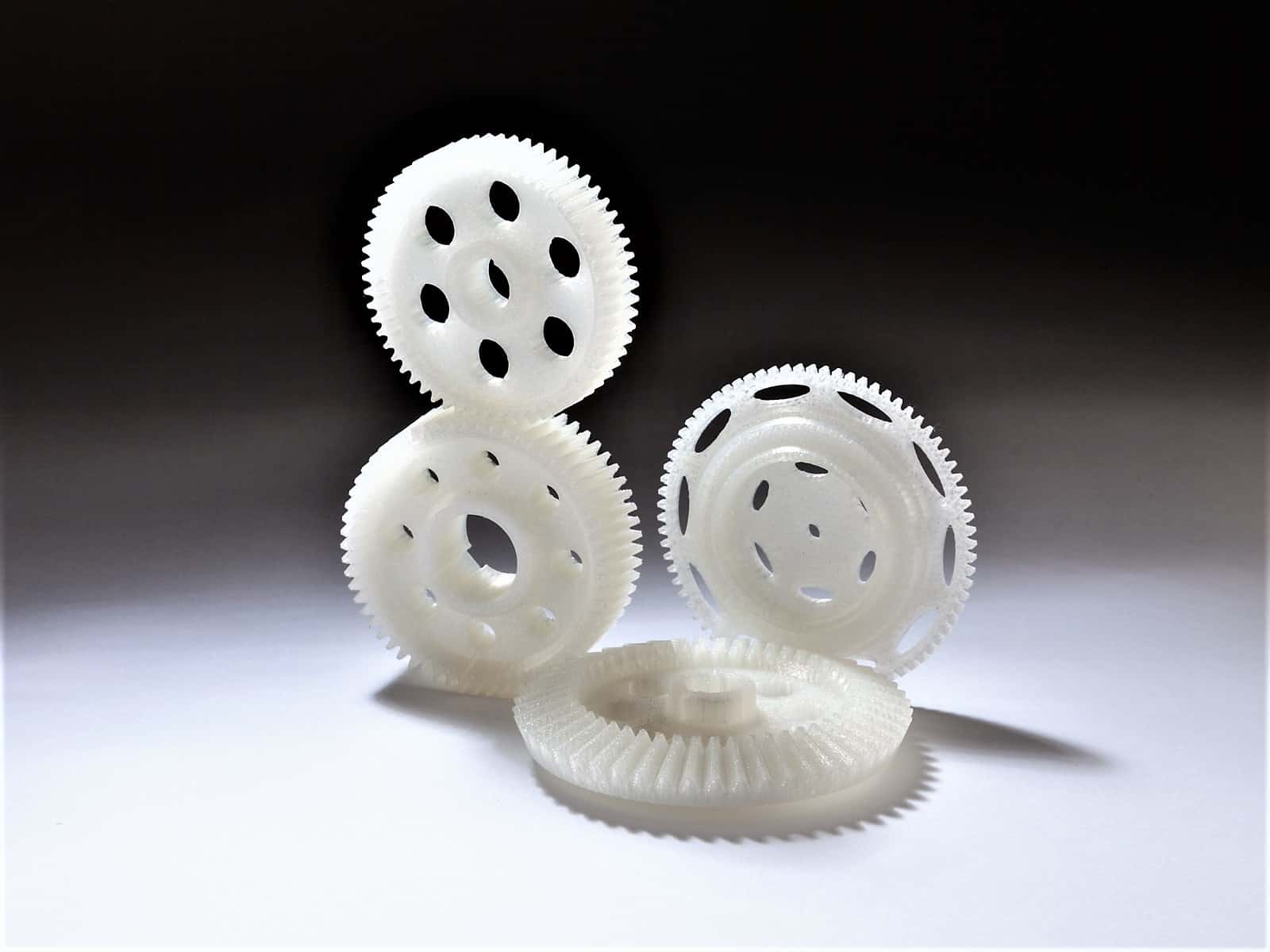
Set of Four Small Gears Printed in Taulman3D Alloy 910 Nylon on the Fusion3 F410 3D Printer
CARBON FIBER, FIBERGLASS & KEVLAR REINFORCED COMPOSITES
In recent years, we have seen a trend towards composite plastics reinforced with carbon fiber, fiberglass and Kevlar. The base plastic could range from any 3D printable plastic, including ABS, Nylons, Polycarbonate as well as PLA and PETG.
The addition of these reinforced materials, in small bits or commonly called “chopped” fibers, modifies the base plastic and provide additional benefits.
Structural Stress: The fibers absorb some of the structural stress within the printed part, enhancing the capabilities of the base material.
Stiffness & Dimensional Stability: By adding fibers, you shore up the part, adding additional stiffness and providing stability to the shape and dimensions of the part.
Thermal Properties: The addition of fibers improve the thermal stability of the base material, often upgrading the useful operating temperatures of the base material.
Different manufacturers will vary the size and percentage of the chopped fibers in the formulation of their filament to achieve different performance characteristics. Smaller fibers at a lower percentage will achieve a better visual quality, while sacrificing the performance characteristics mentioned above. Larger fibers at a higher percentage will result in a coarser finish with a less accurate part, but achieve higher potential theoretical material performance. Also, larger fibers may result in higher chance of print head jams and require use of a larger print head / nozzle.
Specific benefits of each material include:
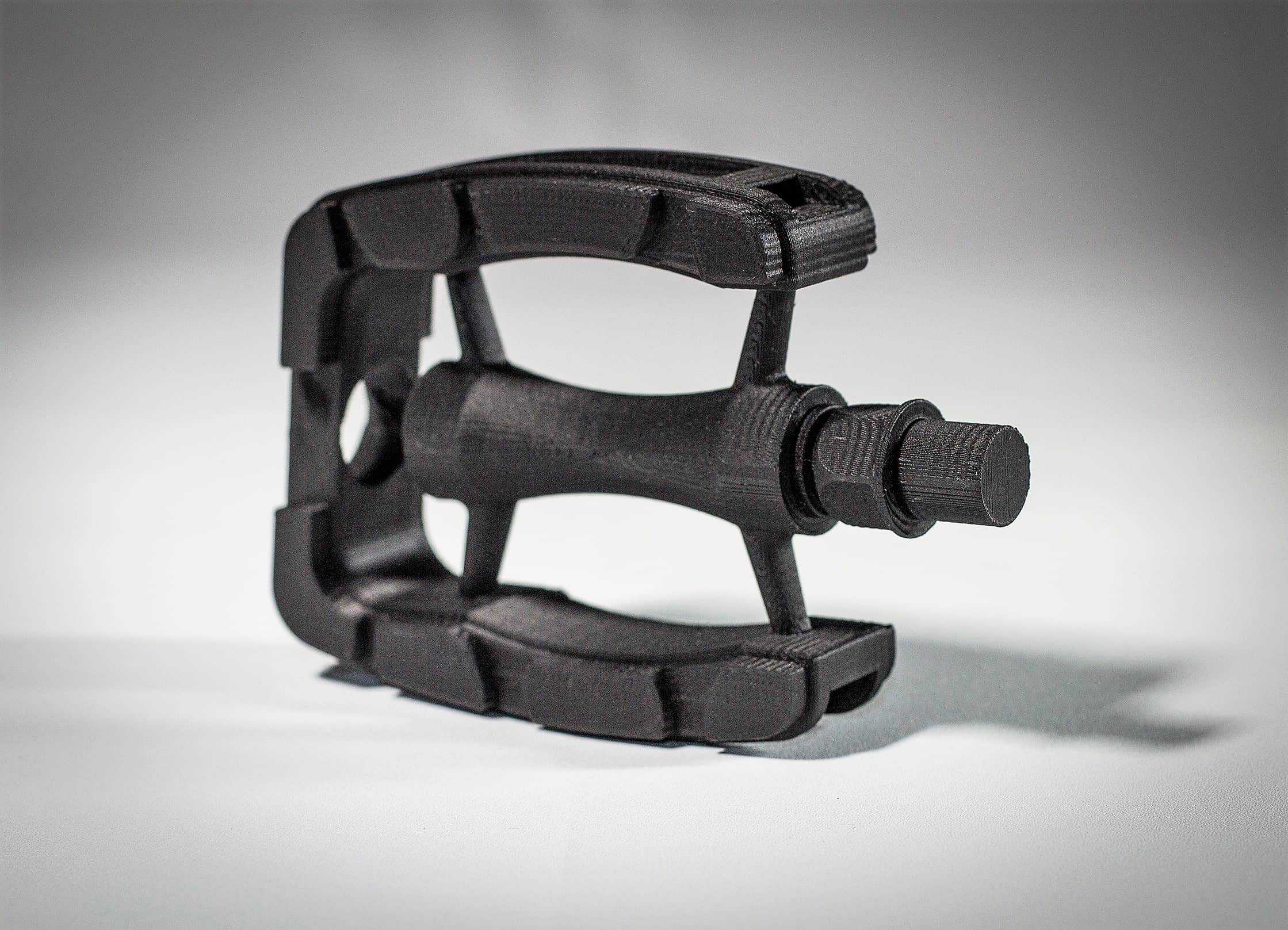
CARBON FIBER
Carbon fiber reinforced 3D printer filaments increase the stiffness and strength of the base material and will decrease shrinkage of your part. Good for light weight and load bearing items.
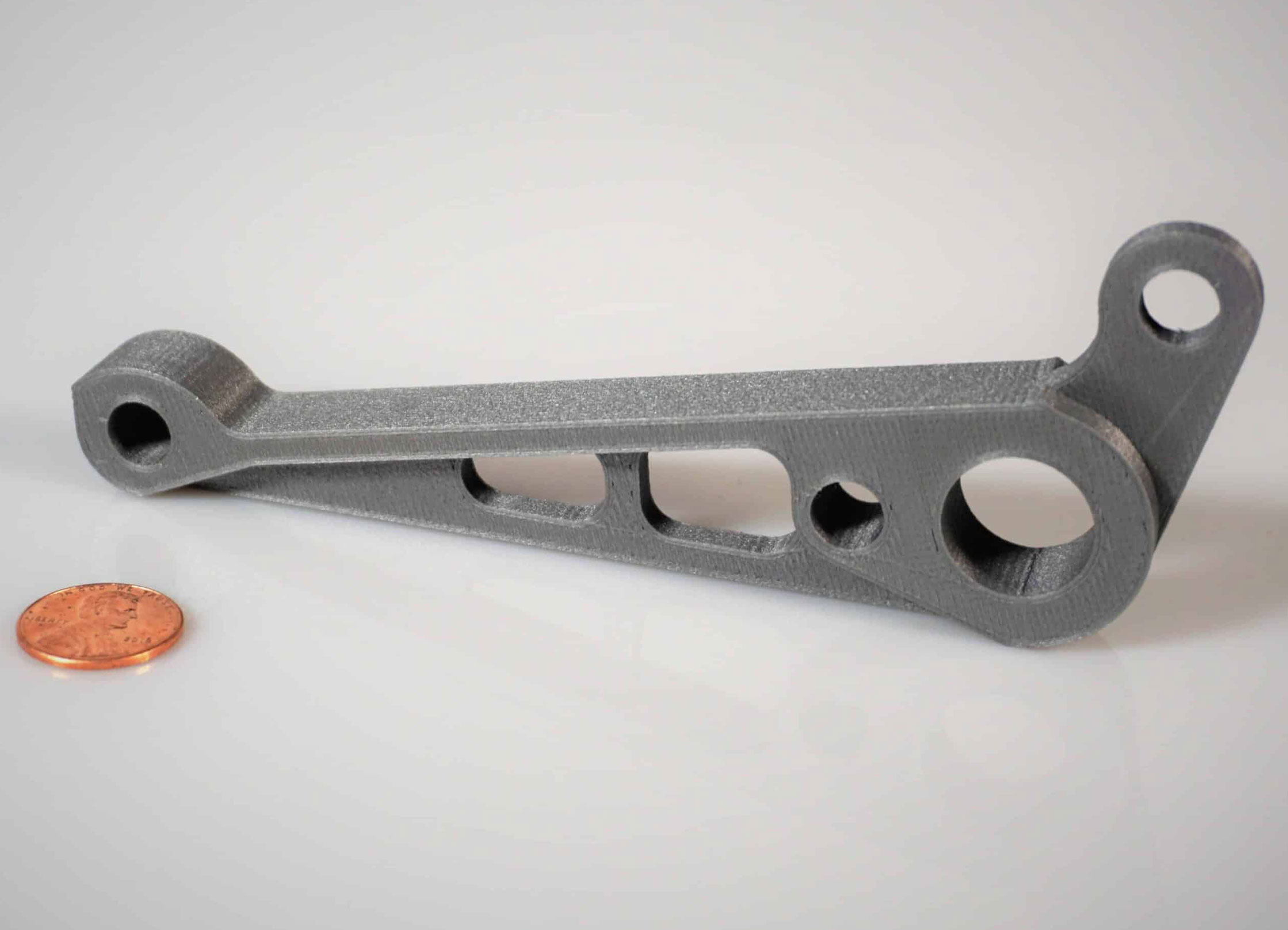
FIBERGLASS
Fiberglass reinforced 3D printer filaments are exceptionally stiff and strong, but not brittle and provide extremely high thermal resistance
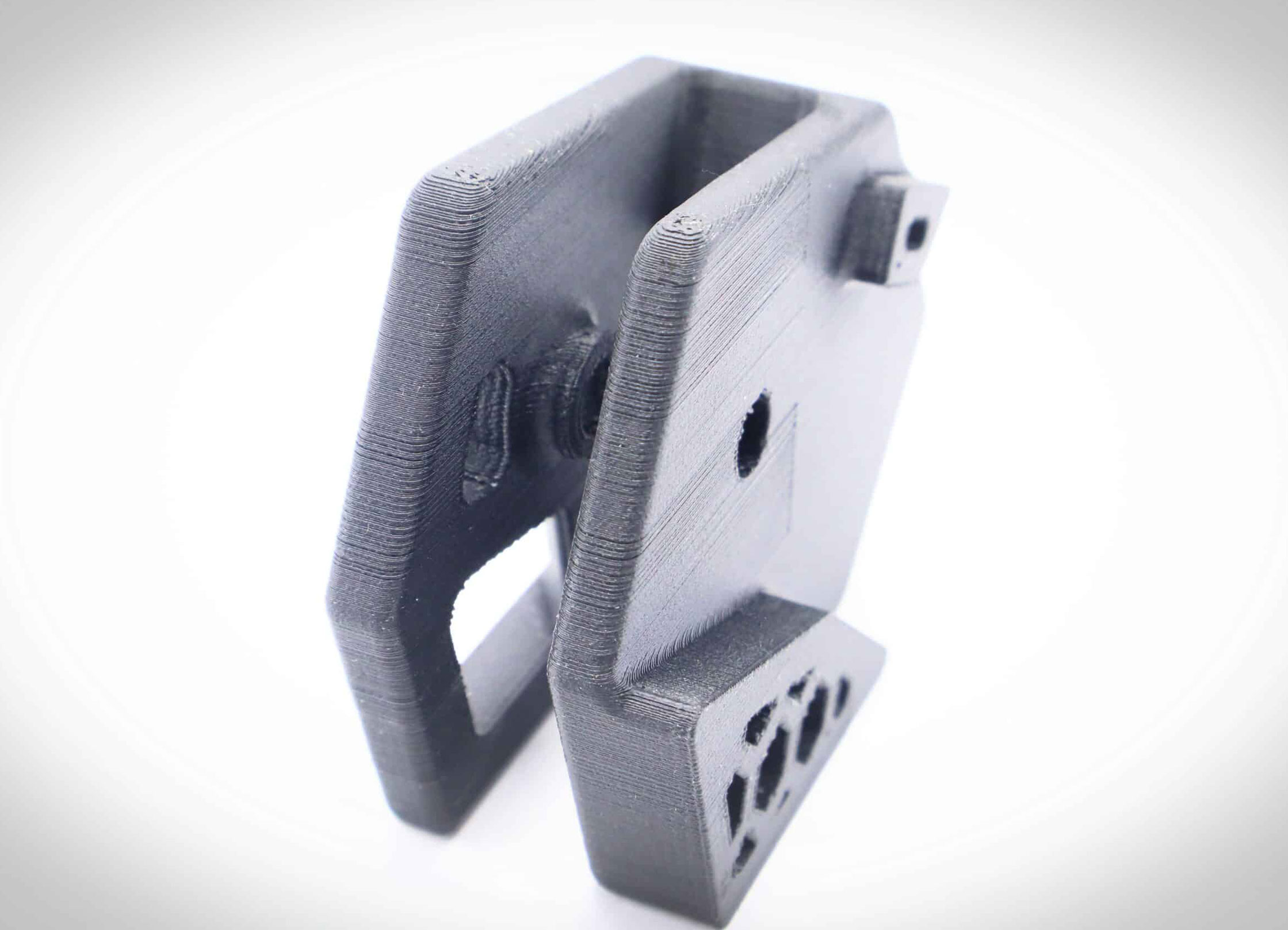
KEVLAR
Kevlar reinforced 3D printer filaments provides strength like other fibers, but still allows for some amount of flex and bend.
POLYCARBONATE
Polycarbonate has the highest strength, impact resistance and temperature resistance of any material that can be 3D printed below 300*C. These factors make it, on paper, an ideal material for Fusion3 engineering focused customers.
However, Polycarbonate, is not the easiest material to print. Developed for injection molding, Polycarbonate prefers to be 3D printed in very high temperature environments. Without a very high temperature (greater than 90*C) at sizes over 3”x3”x3” in size, a polycarbonate part may exhibit significant warping and curling.
The good news is that there are hybrid versions of polycarbonate, most notably, PC+PBT or commonly referred to as “PC+” which maintains most of polycarbonate’s traits while making Polycarbonate much easier to 3D print.
Cost: Polycarbonate will range from $30 to $60 per kilogram and PC+PBT from $45 to $55 per kilogram.
Uses: Polycarbonate has many uses for a wide variety of applications. PC is a good electrical insulator so you might find it used for electrical components. Its optical clarity, high strength and high heat tolerance make it useful for medical devices and manufacturing tooling.
